Before moving to my question, I know how the :before and :after selectors work. (not a duplicate of what is ::before or ::after expression). My question is in regards to use.
I've seen some inconsistencies over the years where these selectors have been used to display the same thing. Same results, different approach. In some specific cases, such as adding a font awesome icon within an li before the a the :before selector makes sense. I'm not inquiring about that use, since it's intuitive enough to understand. But take a speech bubble for a tooltip for instance. I have seen the triangle placed with a :before and also with an :after and in some occasions they use both! I'm confused.
What is the determining factor on choosing which selector should be used to attach an element such as the triangle on a speech bubble?
Allow me to demonstrate:
HTML
<div class="container">
<div class="bubble">This is my text in a bubble using :after</div>
<div class="bubble2">This is my text in a bubble using :before</div>
</div>
CSS
.bubble{
position: relative;
padding: 15px;
margin: 1em 0 3em;
color: #000;
background: #f3961c;
border-radius: 10px;
background: linear-gradient(top, #f9d835, #f3961c);
}
.bubble:after {
content: "";
display: block;
position: absolute;
bottom: -15px;
left: 50px;
width: 0;
border-width: 15px 15px 0;
border-style: solid;
border-color: #f3961c transparent;
}
.bubble2 {
position: relative;
padding: 15px;
margin: 1em 0 3em;
color: #000;
background: #f3961c;
border-radius: 10px;
background: linear-gradient(top, #f9d835, #f3961c);
}
.bubble2:before {
content: "";
display: block;
position: absolute;
bottom: -15px;
left: 50px;
width: 0;
border-width: 15px 15px 0;
border-style: solid;
border-color: #f3961c transparent;
}
IMG
Please don't tell me it's just a matter of preference. lol
